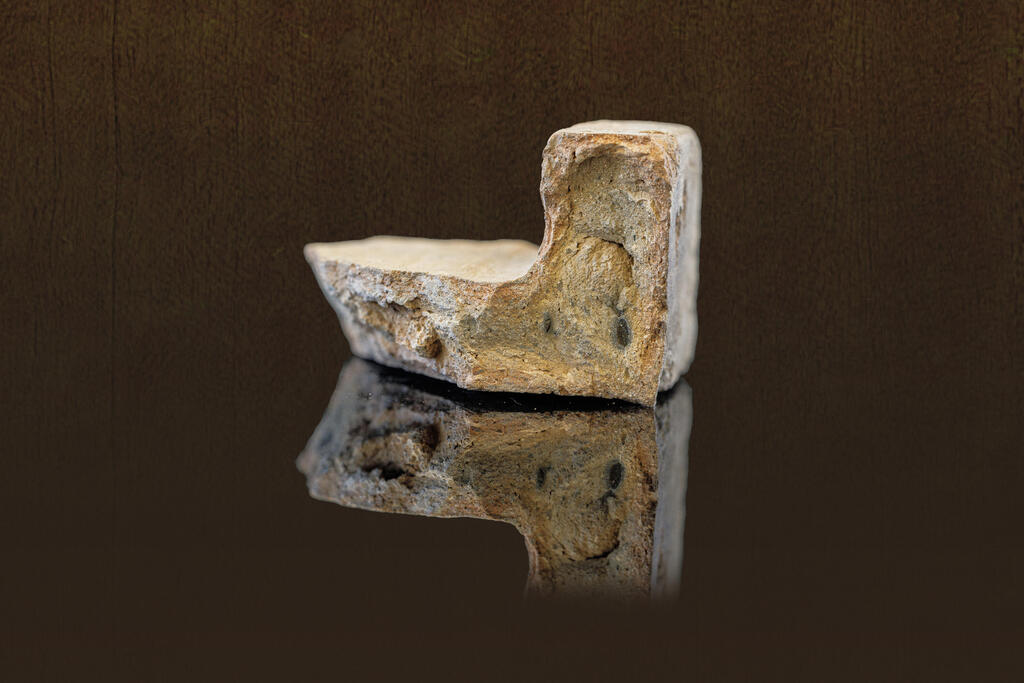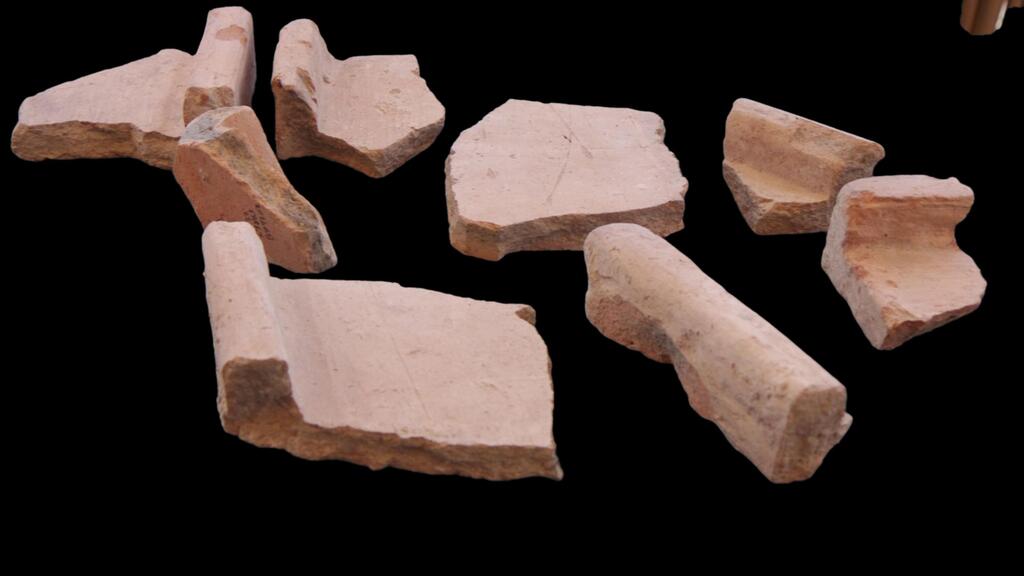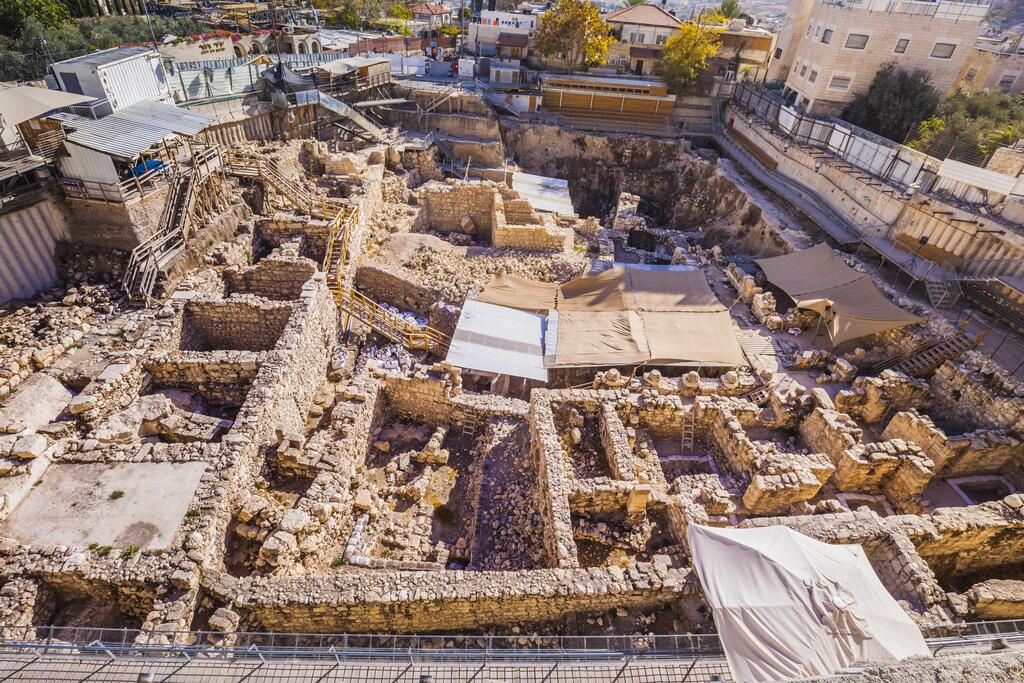The oldest evidence to date of the use of ceramic roof tiles in Israel has recently been uncovered in Jerusalem’s City of David National Park: 16 fragments of ceramic tiles from the Hellenistic period (2nd century BCE) were found in archaeological excavations conducted by the Israel Antiquities Authority (IAA) and Tel Aviv University. The discovery is dated to the days of Antiochus IV - the infamous Greek ruler of the Jewish holiday of Hanukkah.
More stories:
According to the IAA, ceramic tiles were invented in Greece in the 7th century BCE. Their durability and resistance to water and fire gave them beneficial attributes, ensuring their rapid spread to neighboring regions. Nevertheless, 500 years passed from their invention until they arrived in Israel. In fact, it was Antiochus IV Epiphanes himself who brought them with him.
3 View gallery


Fragment of Greek roof tile found in Jerusalem
(Photo: Eliyahu Yanai, City of David National Park)
"Representatives of the Seleucid king Antiochus IV, who ruled over extensive areas from Syria to the Persian region, brought with them the knowledge and tradition necessary for the construction of ceramic roof tiles from their center of control in Syria," said Dr. Yiftah Shalev and Dr. Filip Vukosavovic from the IAA and Prof. Yuval Gadot from Tel Aviv University.
According to the Book of Maccabees, in the year 168 BCE, Antiochus conducted a military campaign to Jerusalem, leading to the famous Maccabean Revolt. In order to establish his rule over the city, Antiochus erected a powerful fortress called the Acra.
The soldiers in the fortress continued to control the city even after pacifying the Temple Mount, and according to the descriptions of the book and the writings of Jewish historian Josephus Flavius, the fortress cast a long shadow over the lives of the city's inhabitants. Despite the numerous descriptions of the fortress in various sources, its exact location within the city remains a subject of debate in research.
According to Dr. Ayala Zilberstein from the IAA and Tel Aviv University, "Recent findings in excavations held in the City of David in recent years have reopened the discussion and strengthened the assumption that the fortress’ location was specifically near the City of David. Discoveries of Hellenistic tiles provide additional support for a new perspective on the Hellenistic presence with foreign construction traditions in the City of David.”
“Further research on additional tiles uncovered by another archaeological team may shed additional light on this issue,” she added. “The fact that these tiles are very rare in our region during this period and that they align with local building traditions suggests they were brought by foreign authorities for the purpose of demolishing parts of a tower or a structure belonging to the same famous fortress."
Dr. Vukosavovic added, "Until now, we had very little physical evidence of Greek presence in Jerusalem. The new tiles we discovered in the City of David physically connect us to the Hanukkah story and the signs of Greek presence in the region. This is very exciting because after about 2,200 years since the events of Hanukkah in Jerusalem, can see the Greek rule and Antiochus IV in Jerusalem."
Dr. Vukosavovic explained that "Climate conditions and low rainfall in Israel, among other reasons, don’t justify the use of roof tiles, but Antiochus IV chose to use them, probably for declarative and cultural reasons. It was important for him to promote Greek material culture in Israel, in close proximity to the Temple in Jerusalem, and the use of roof tiles was part of this effort.”
“Therefore, it’s no coincidence that immediately after the fall of the Greek rule and the rise of the Hasmonean kingdom in Israel, the roof tiles disappeared from Jerusalem until the arrival of a new conqueror - the Romans," he added.
IAA director Eli Eskozido said, "It's interesting to learn that despite the fact that the design, shape, and size of roof tiles evolved over hundreds of years, their use remains stable across the world. It's amazing how such an everyday item can tell us so much."




